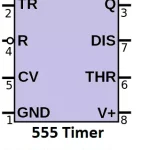Product returns used to feel like guaranteed losses, but now they can become real profit opportunities. Many customers send items back for simple reasons like size, fit, or a change of mind, and each return gives you a chance to recover value instead of losing it. With clear steps, quick sorting, and better decisions, you can turn a costly problem into a process that supports resale, repair, or recycling while keeping customers satisfied.
Imagine transforming a chaotic, costly task into a reliable extra revenue source. These strategies can benefit businesses of all sizes. Keep reading to learn how you can turn returns into profit-and why the full article will help you get started.
Why Returned Goods Matter
Returns affect your inventory, cash flow, and customer satisfaction. They increase costs and tie up stock while highlighting product issues and customer needs. Treat returns as a business process, use the data to improve products, and reduce future returns.
Measure the True Cost of Returns
Track direct costs like shipping, inspection, and restocking. Add indirect costs: lost sales, damaged brand reputation, and time staff spend handling items. When you see the full picture, you can prioritize fixes and investments that lower net cost.
Build a Clear Reverse Flow
A clear reverse flow moves items fast and to the right place. Slow or messy returns inflate costs and reduce recoverable value.
Streamline Returns Intake
Create an easy system for customers to start returns. Use pre-printed labels, clear instructions, and simple forms. Faster intake reduces damage in transit and speeds processing.
Route Returns by Condition
Inspect quickly and route items to one of several paths: restock, refurbish, repair, liquidation, or recycle. Use simple condition codes and decision rules so staff can move items without delay.
Technology That Pays Back
Tools reduce handling time and help you make better decisions. You don’t need advanced systems to start. Even simple automation can make your returns process faster and smoother.
Barcode scanners record return details and speed up routing. They also create a clear audit trail for your team. Basic automation then handles routine decisions, reduces delays, and lowers labor costs.
Turning Returns Into Revenue Streams
Different types of returns need specific recovery plans to get the most value out of each item, especially within supply chain management. Some products can go straight to resale, while others need repair or parts recovery to stay profitable. Blending these strategies helps turn more returns into usable profit.
Items in good condition should move back into inventory fast. A short inspection window confirms quality and keeps things moving. Clear pricing and honest labeling guide customers and reduce confusion.
High-value or damaged items can still earn solid margins through repair, refurbishment, or parts harvesting. Certified repair centers can bring electronics and complex goods back to a dependable state. Even low-value items may contain components or materials that can be recycled or repurposed for extra income.
Reduce Returns at the Source
Preventing returns gives you the biggest savings, and it starts with better customer information. Clear measurements, honest descriptions, and helpful photos or guides set the right expectations before a purchase. These simple steps cut down on “didn’t fit” and “not as described” returns.
Strong packaging and reliable shipping also help keep return rates low. Secure boxes and trusted carriers reduce damage during delivery. Fewer damaged orders mean fewer returns and more satisfied customers.
Pricing and Promotions for Returned Stock
Returned items can sell well when priced smart and placed in the right channels. You can move them through outlet pages, flash sales, partner marketplaces, or bundle deals with lower-cost items. Clear labels, simple guarantees, and targeted promotions help clear inventory and attract budget buyers.
Track Metrics That Matter
Measure your results to improve your returns process and understand where value is gained or lost. Track key metrics like return rate, time to disposition, recovery rate, and net recovered value. Focus on raising your recovery rate by speeding up routing and working with strong repair partners so more returns turn into cash.
Build Partnerships
Reliable partners can transform returns into profit by managing items you can’t handle in-house. Work with trusted repair shops, recyclers, and liquidators that follow clear standards and protect your brand. Ethical liquidators also help you clear unsellable stock while creating extra revenue through responsible bulk sales.
Legal and Environmental Considerations
Follow waste and safety rules, especially for electronics and batteries. Handle and recycle hazardous materials safely to meet local regulations. Keep clear records of disposal and repairs to protect yourself in audits and show customers you follow proper standards.
Practical Checklist to Start Today
Start by mapping your returns process from beginning to end so you can spot delays and fix weak points. Set simple condition codes, train staff on quick inspections, and use barcode tracking to keep each step clear and consistent. Build a partner list for repair, liquidation, and recycling to move items through the right channels without confusion.
Next, set up a resell channel for returned items so you can recover value faster. Quick wins you can apply in the first month include adding a simple returns form, placing one barcode scanner at the returns desk, and creating a short repair referral list. Hold weekly reviews to clear old stock, track progress, and set a recovery goal your team can work toward.
Small improvements add up and create strong momentum over time. Track the results, share the gains with your team, and build on what works best. Use Reverse Logistics in printed materials and enhance it with embossing, spot UV, or foil stamping to make the anchor stand out.
Turning Returns Into Profit
A clean returns process does more than cut losses – it creates steady value. When you track each step, sort items fast, and work with solid repair or resale partners, returns shift from a cost to a reliable revenue source. These simple steps help you recover more, waste less, and protect your margins.
Take action now by tightening intake checks, setting clear condition codes, and opening resale or refurb channels that fit your business. Small changes stack up and turn returns into a system that supports growth. Stay informed and gain an edge by exploring our blog for additional practical examples.







